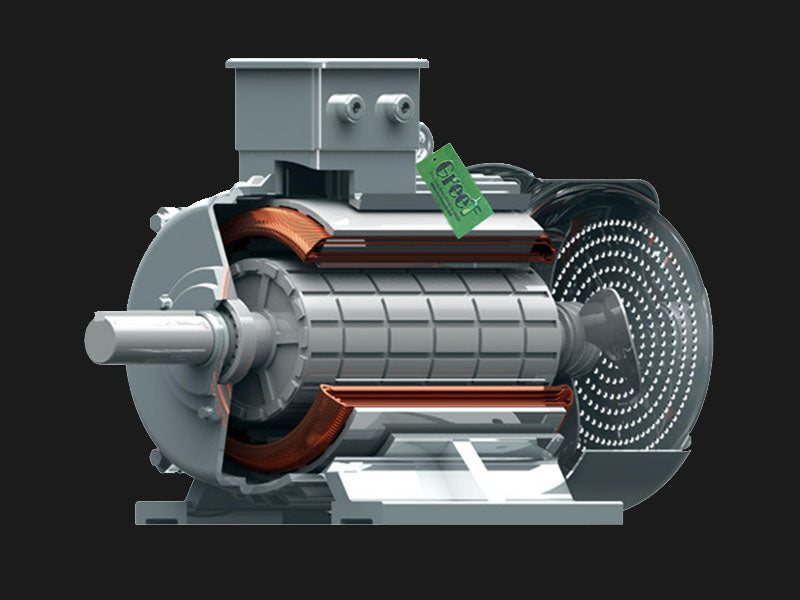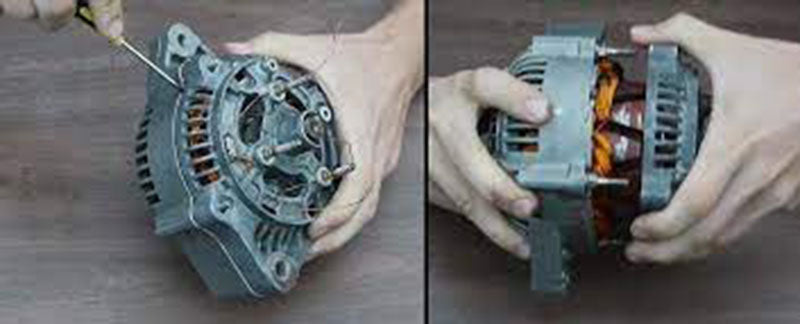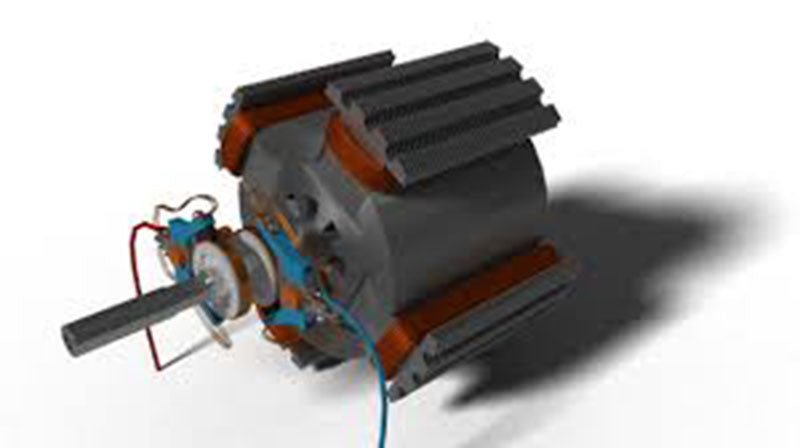
Main content:
1. Applications for low-speed alternators driven directly by wind turbines
As we all know, high-speed alternators are used in thermal power plants, and high-speed alternators are also used in nuclear power plants. Generator, depending on the level of water drop, the low-speed alternators rotates from tens of revolutions per minute to several hundred revolutions per minute. This is because the thermal power plant directly drives the alternator by the high-speed rotating steam turbine, while in the hydroelectric power plant. The reason is that the alternator is directly driven by the low-speed alternators rotating at a low speed.
Wind turbines also belong to the machinery of low-speed alternators. The rotational speed of medium and large wind turbines is about 10 r/min~40 r/min, which is lower than that of water turbines. Large wind turbines are located between the wind turbine and the alternator. A speed-increasing gearbox is installed, and the speed is increased by means of the gearbox, so the high-speed alternator is still used. If driven directly by a wind turbine, a low speed alternator must be applied.

2. Features of low-speed alternators
2.1 Appearance characteristics of low-speed alternators
According to the low-speed alternators theory, the rotational speed of the low-speed alternators have a fixed relationship with the number of pole pairs of the low-speed alternators and the frequency of the alternating current generated by the low-speed alternators, namely,

When f=50 Hz is a constant value, if the speed of the low-speed alternators are lower, the number of pole pairs of the low-speed alternators should be more. From the structure of the low-speed alternators, the inner diameter of the stator of the low-speed alternators are proportional to the number of poles and the pole distance of the low-speed alternators, namely

Therefore, the inner diameter of the stator of the low-speed alternators are larger than that of the high-speed alternator. From the principle of low-speed alternators design, it is also known that the capacity of the low-speed alternators is related to the inner diameter of the low-speed alternators stator and the axial length (l) of the low-speed alternators, namely

It can be seen from formula 3 that when the design capacity of the low-speed alternators are constant, the lower the rotational speed of the low-speed alternators, the larger the size of the low-speed alternators. The inner diameter of the stator of the machine is large, so the axial length of the low-speed alternators are small relative to the inner diameter of the stator, and the shape of the low-speed alternators resemble a large flat disk.

2.2 Number of winding slots for low-speed alternators
Since the low-speed alternators have a large number of poles and a small number of slots per pole and each phase of the low-speed alternators, when q is a small integer, the method of winding distribution cannot be used to reduce the wave magnetic densities induced in the stator windings. At the same time, the tooth spectrum wave potential caused by the cogging effect on the stator also increases, which will cause the potential waveform of the low-speed alternators winding to be no longer sinusoidal. According to the low-speed alternators winding theory, fractional The slot winding can weaken the high-order harmonic potential and the high-order tooth harmonic potential, so that the low-speed alternators winding potential waveform is improved and becomes a sinusoidal waveform. The so-called fractional slot winding is that the number of slots per pole and phase of the low-speed alternators are not an integer, but a fraction, that is

In the formula: Z is the total number of slots along the inner circle of the stator core of the low-speed alternators; m is the phase number of the low-speed alternators.
Large-scale hydro-generators mostly use fractional slot windings. In small and medium-sized low-speed alternators, inclined slots (the number of slots on the stator core or the rotor magnetic poles are skewed by the size of one stator pitch) or magnetic slot wedges can also be used. , can also reduce the tooth harmonic potential.
In the wind power generation system, if the wind turbine operates at a variable speed and is connected to the power grid in an AC-DC-AC manner, fractional slot windings may not be used, but a PWM (pulse width modulation) method is used in the inverter to obtain a sinusoidal shape. of alternating current.

2.3 Number of rotor poles for low-speed alternators
The rotor of the low-speed alternators have a large number of magnetic poles, and the use of water long magnets can make the rotor structure simple and easy to manufacture.
The inner diameter of the stator of the low-speed alternators are large, so the size of the rotor and the inertia are also large, which is beneficial to suppress the change of electromotive force caused by the change of wind; however, the structure of the rotor rim and its cross-sectional size should meet the allowable mechanical strength and magnetic permeability. needs.
2.4 Structural form of low-speed alternators
The structural form of wind turbines is divided into two forms: horizontal axis and vertical axis. Low-speed alternators also have two forms: horizontal axis and vertical axis. Germany adopts low-speed alternators with horizontal axis structure, while Canada adopts vertical axis. Low speed alternator in shaft construction.
Read more: Introduction of doubly-fed asynchronous generator